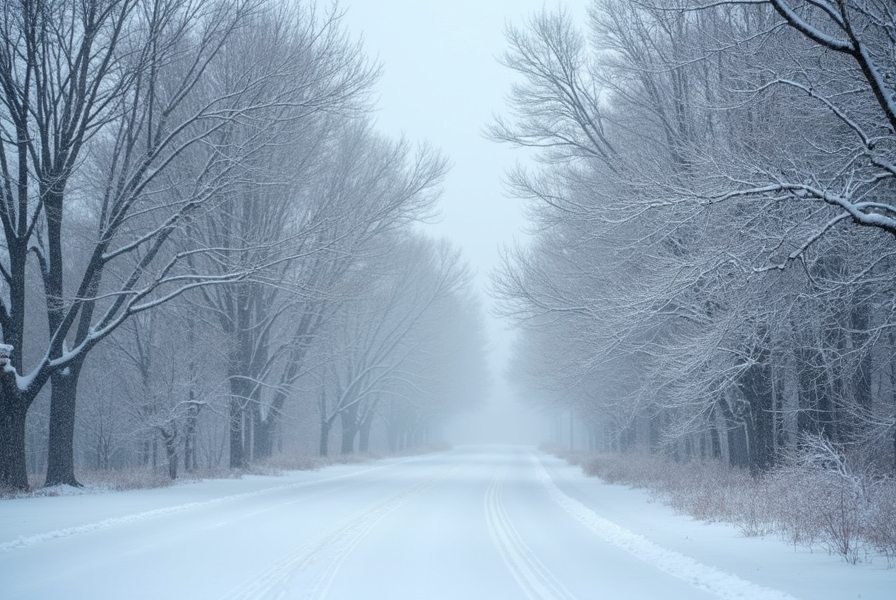Understanding Texas Winter Weather: A Surprising Mix of Climates
When people think about Texas, snow is usually not the first thing that comes to mind. Many imagine endless sunshine, cowboys, and wide-open plains. But Texas is massive and its winter weather can surprise both residents and visitors. Snow in Texas is a real phenomenon—just not everywhere, and not every year.
Does Texas Get Snow? Breaking the Myth
One of the biggest myths is that it never snows in Texas. The truth is, Texas does see its share of snow, although snowfall frequency and intensity vary based on location. From the Panhandle to far West Texas and even occasionally in big cities like Dallas, snow can and does fall. Understanding where and why it snows in Texas helps you prepare for winter weather and settle the debate of "Does it snow in Texas?" once and for all.
Regions in Texas Most Likely to See Snow
- Texas Panhandle: Cities like Amarillo and Lubbock often get several inches of snow each winter. The high elevation and northern geography set the stage for snowstorms and icy conditions.
- West Texas: The Guadalupe Mountains and areas around El Paso occasionally experience snow, especially on higher ground.
- North Texas: Dallas-Fort Worth and surrounding cities see snow and ice about once a year or every other year. Snowfall is usually light, but major winter storms do happen, as seen in February 2021.
- Central and East Texas: Snow is less common, but cold snaps sometimes bring a dusting or a rare snow day.
- South and Coastal Texas: Places like Houston, San Antonio, and Corpus Christi rarely see snow, but flurries do happen once a decade or so.
Why Does It Snow in Texas? Key Weather Factors
Snowfall in Texas depends on three main factors:
- Latitude: Northern parts of Texas are closer to typical snow belts.
- Elevation: Higher elevations, like those in the Panhandle and mountains, cool faster and are more likely to see snow.
- Cold Fronts: Arctic cold fronts sometimes dip south and meet Gulf moisture, creating perfect snow conditions even in unlikely places.
This means that no matter where you are in Texas, sudden weather changes are possible. Staying updated with local forecasts is important during the winter months from December through February.
Average Snowfall in Texas: What the Data Shows
Snowfall amounts depend heavily on your location in Texas. Here’s what you can expect on average:
- Amarillo and the Panhandle: 15–20 inches per season
- Lubbock: 8–10 inches per season
- Dallas-Fort Worth: 1–2 inches per season, with some years seeing more
- Houston, San Antonio, Austin: Trace amounts or none most years, but occasional measurable snow
Cities in West Texas and the northern region may experience several snowfalls per year, while major cities in Central and South Texas might celebrate (or panic over) a single snow day every few years.
Memorable Snow Events in Texas History
Some snowstorms stand out in Texas weather history:
- February 2021 Winter Storm: Nearly all of Texas was blasted with snow and ice, breaking records and leaving millions without power.
- Christmas Eve 2004: South Texas, including Brownsville and Corpus Christi, saw up to 13 inches. A white Christmas in Texas made national headlines.
- January 1985 Snowstorm: Widespread snowfall, especially in the Panhandle and Central Texas, shut down highways and schools.
These events show that while snow is rare in much of Texas, it’s not impossible. When wintry weather strikes, Texans adapt quickly—creating new memories whether it’s making snow angels or simply marveling at the flakes.
Common Texas Snow Myths Answered
- Myth: It never snows anywhere in Texas.
Fact: It regularly snows in parts of North and West Texas. - Myth: When it snows, it sticks around for days.
Fact: Most Texas snow melts quickly as temperatures rebound. - Myth: Every part of Texas is warm, even in winter.
Fact: Some regions experience freezing temperatures and icy conditions.
Planning Your Texas Winter Visit: What to Expect
If you're planning a winter trip to Texas, check the local weather forecast. Pack appropriately if visiting the Panhandle, West Texas, or Northern Texas between December and February. Weather can change rapidly, especially if Arctic fronts arrive. Many Texans cherish the rare snow days – city parks fill with families building snowmen, and social media explodes with photos of snowy cactus or palm trees.
The Impact of Recent Climate Trends on Texas Snowfall
Climate patterns such as El Niño and La Niña affect Texas winters. El Niño years tend to bring wetter, cooler conditions—slightly increasing snow chances, especially in North Texas. La Niña years are usually warmer and drier, but big winter storms can still happen. Weather extremes, like the 2021 winter storm, are reminders that Texas can deliver surprises, no matter the climate predictions.
How to Stay Safe During Snow in Texas
- Monitor weather reports and local forecasts if freezing weather is predicted.
- Prepare your car and home for icy conditions, especially in northern and western Texas.
- Follow city guidelines for travel during winter weather advisories.
- Stock up on essentials if a significant winter storm is forecast.
Most Texans handle moderate snow with ease, but even small snowfalls can disrupt travel, power, and daily life in areas less accustomed to winter weather. Staying ready helps you avoid difficulties when frosty weather strikes.
Frequently Asked Questions About Snow in Texas
Where in Texas does it snow the most?
The Texas Panhandle and areas near Amarillo typically receive the most snow each winter, averaging up to 20 inches per season. The high elevation and northern location make snow more common there than elsewhere in the state.
How often does it snow in Dallas and Houston?
Dallas usually sees snow once every year or two, often just a light dusting or a few inches at most. In contrast, Houston rarely gets snow—maybe once a decade—often with only trace amounts.
Has it ever snowed along the Texas coast?
Yes, though it is very rare. A famous example is the 2004 Christmas Eve snowstorm that brought up to 13 inches of snow to the Texas Gulf Coast, including Corpus Christi and Brownsville.
What month does Texas get the most snow?
January is usually the snowiest month in Texas, especially in northern and western areas. However, snow can fall anytime between late November and early March.
Do Texas schools close for snow?
Yes, many Texas schools close or delay opening if snow or ice accumulates, since wintry weather can make roads dangerous and most areas lack snow removal equipment.











.svg)



